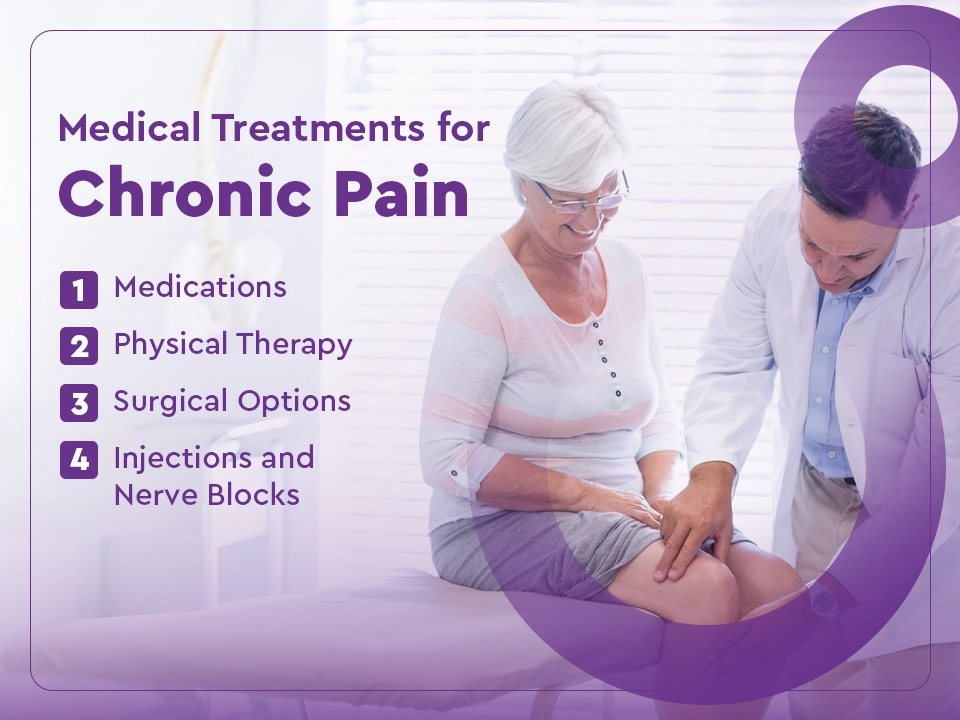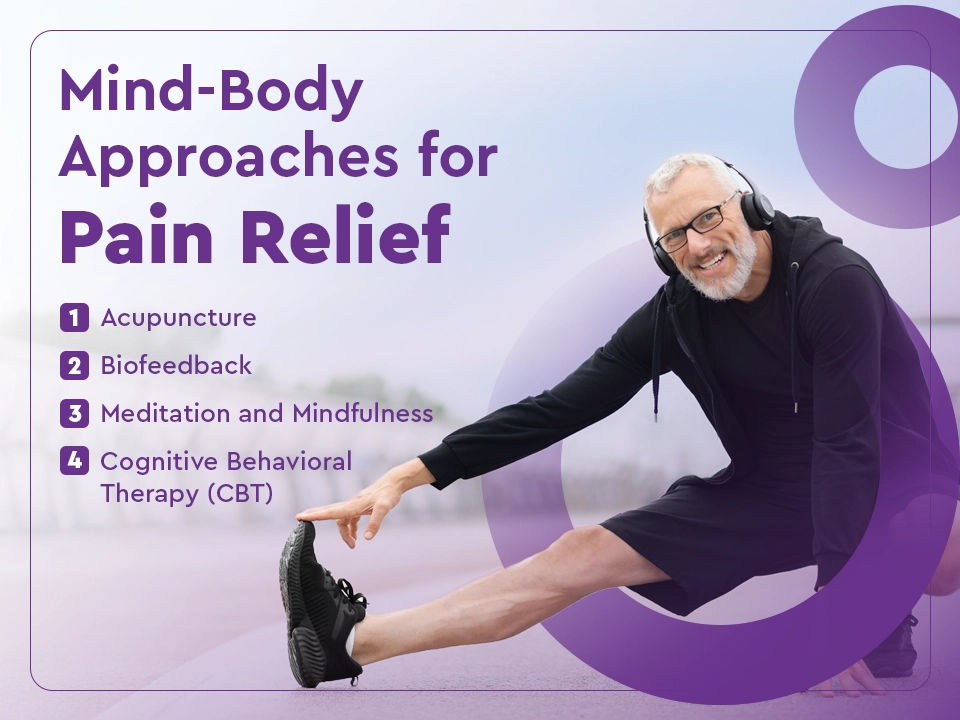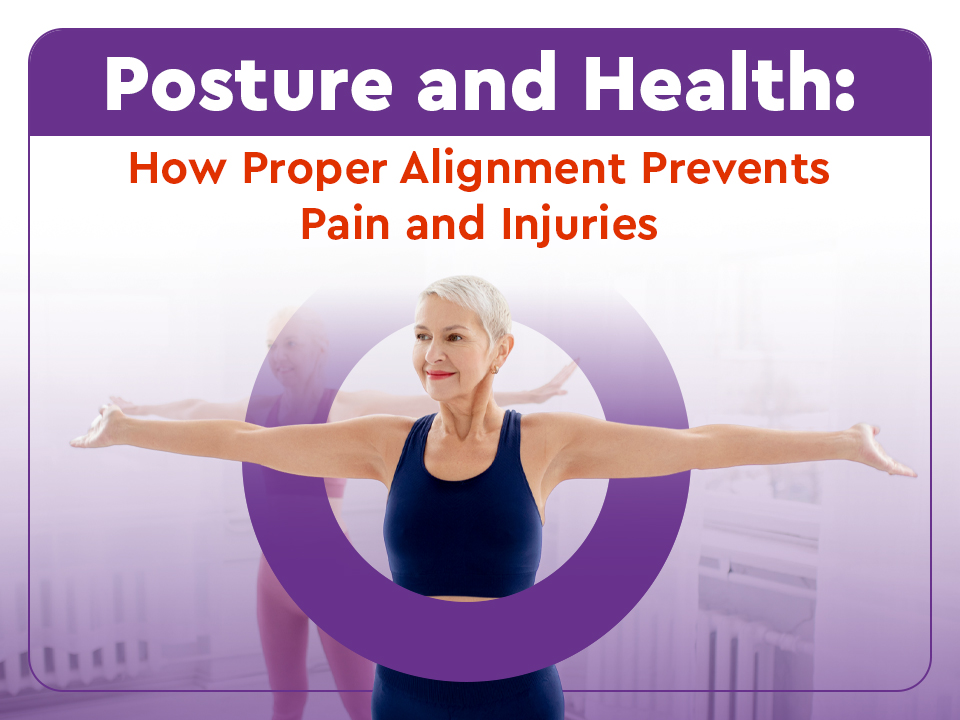Introduction
Chronic pain affects millions of people worldwide, impacting daily life and overall well-being. It differs from acute pain in that it persists over time, often lasting for months or even years. Conditions like arthritis, back pain, and migraines are common sources of chronic pain, and managing them effectively can be challenging. Without proper care, chronic pain can lead to emotional distress, limited mobility, and a decreased quality of life. However, long-term relief is possible with the right approach.
Successful chronic pain management involves a combination of medical treatments, lifestyle changes, and alternative therapies. Finding the right solution often requires a personalized approach that addresses the root causes of pain. From prescription medications and physical therapy to dietary adjustments and stress-relief techniques, many strategies can help reduce pain and improve daily function. This guide outlines proven strategies to manage chronic pain effectively, offering practical tips that can be integrated into your daily routine for lasting relief. Whether you seek medical interventions or alternative solutions, it is crucial to find the right balance to maintain an active and fulfilling life.
Understanding Chronic Pain
Chronic pain is more than just an occasional ache. It’s defined as pain that persists for more than three months, often without a clear cause. It can result from various conditions such as arthritis, back problems, fibromyalgia, or nerve damage. Sometimes, however, no identifiable cause is found, which can make treatment more challenging. Chronic pain is not just a symptom—it can become a condition in itself, affecting multiple aspects of your life.
- What Causes Chronic Pain?
Chronic pain can arise from a wide range of medical conditions. Common sources include musculoskeletal problems like arthritis or herniated discs, nerve issues like neuropathy, and conditions such as fibromyalgia. In some cases, the pain may be linked to an injury that never fully healed, leading to ongoing discomfort. Other times, chronic pain develops with no clear reason, making it harder to pinpoint the exact cause. - Chronic Pain vs. Acute Pain
Acute pain is your body’s natural response to injury, infection, or illness. It’s temporary and usually subsides once the underlying cause is treated. Chronic pain, on the other hand, can last for months or even years. It doesn’t always correlate with an obvious injury and can continue even after the initial cause has healed. - How Chronic Pain Affects Your Body
Chronic pain alters how the nervous system processes pain signals. Over time, this can lead to changes in the brain and spinal cord, making the body more sensitive to pain. This altered pain response can cause muscle weakness, restricted movement, and other physical limitations. - The Emotional Impact
Chronic pain isn’t just physical—it can affect mental health too. The ongoing discomfort can lead to feelings of frustration, anxiety, and depression. It can also impact your ability to work, exercise, and perform everyday activities, often resulting in social isolation.
Read More: How Knee Braces Can Help You Stay Active and Pain-Free
Medical Treatments for Chronic Pain

When managing chronic pain, medical treatments are crucial. Here are some common options that can help.
- Medications
Pain-relief medications are often the first step. Over-the-counter drugs like ibuprofen or acetaminophen can reduce mild pain and inflammation. For more severe pain, stronger medications, including opioids (used cautiously), may be prescribed. NSAIDs and muscle relaxants can also help manage pain and muscle spasms. - Physical Therapy
Physical therapy is effective in managing chronic pain. A therapist guides you through exercises and stretches that improve strength, flexibility, and mobility. Regular therapy can reduce pain, prevent further injury, and improve overall movement. - Injections and Nerve Blocks
For localized pain, injections such as corticosteroids or nerve blocks can provide relief. These treatments reduce inflammation and interrupt pain signals, especially for conditions like arthritis or back pain. - Surgical Options
If other treatments fail, surgery may be necessary. Procedures like joint replacement or spinal fusion can offer lasting pain relief when the underlying cause is treatable through surgery.
Medical treatments offer effective solutions for chronic pain, but it’s crucial to consult with a healthcare provider to determine the best approach for your condition.
Lifestyle Modifications for Pain Management
Managing chronic pain involves more than just medical treatments; lifestyle modifications can play a significant role in reducing pain and improving overall well-being. Regular exercise, particularly low-impact activities like walking, swimming, and yoga, helps improve strength, flexibility, and mobility while reducing stiffness and increasing circulation. A healthy, anti-inflammatory diet rich in fruits, vegetables, and lean proteins can also help minimize pain and inflammation while avoiding processed foods and excess sugar. Maintaining a healthy weight is crucial, as excess weight can place additional strain on joints, worsening conditions like arthritis. Prioritizing quality sleep is essential, as poor rest can amplify pain perception, so maintaining a consistent sleep schedule and creating a calming bedtime routine is beneficial. Additionally, managing stress through practices like meditation, deep breathing, and mindfulness can reduce pain intensity and improve emotional well-being. By adopting these lifestyle changes, individuals can experience a reduction in chronic pain and lead a more active, fulfilling life.
Mind-Body Approaches for Pain Relief

Mind-body approaches offer effective strategies for managing chronic pain by addressing both physical and emotional aspects. Here are some techniques that can help:
- Meditation and Mindfulness
Meditation and mindfulness practices can help reduce the perception of pain by calming the mind and promoting relaxation. Focusing on the present moment can lower stress and anxiety, which often exacerbate pain. Regular practice can help improve your ability to manage discomfort and stay in control of pain. - Cognitive Behavioral Therapy (CBT)
CBT is a psychological approach that helps individuals reframe negative thoughts related to pain. By changing the way you think about pain, you can alter your emotional response and reduce its impact. CBT has been shown to help individuals manage chronic pain by teaching coping mechanisms and pain management strategies. - Acupuncture
Acupuncture involves inserting thin needles into specific points on the body to stimulate nerve pathways and improve pain relief. This ancient practice is believed to promote healing by balancing the body’s energy and reducing inflammation. Many people find acupuncture to be an effective complementary treatment for chronic pain. - Biofeedback
Biofeedback is a technique that teaches individuals to control certain physiological functions, such as heart rate and muscle tension. By monitoring these functions in real time, people can learn to reduce stress and manage pain more effectively. This mind-body technique can be a helpful tool for managing chronic pain and improving overall well-being.
Mind-body approaches can significantly complement other pain management strategies by improving emotional and physical resilience. Incorporating these methods into your routine can help create a balanced, holistic approach to chronic pain relief.
The Role of Medical Supplies in Chronic Pain Relief
Medical supplies play a crucial role in managing chronic pain by providing targeted relief and supporting recovery. Here are some key medical supplies that can help:
- Braces and Supports
Braces and supports are designed to stabilize joints and muscles, reducing strain and preventing further injury. Whether for the knees, back, or wrists, these devices help alleviate pain caused by conditions like arthritis or muscle strain. They provide support during movement, making daily activities more manageable. - Hot and Cold Therapy Products
Hot and cold packs can effectively reduce inflammation and promote healing. Heat therapy helps relax tight muscles and improve blood flow, while cold therapy reduces swelling and numbs pain. Alternating between hot and cold treatments can offer relief for various chronic pain conditions. - TENS Units (Transcutaneous Electrical Nerve Stimulation)
TENS units use electrical impulses to block pain signals to the brain. This non-invasive treatment can provide significant pain relief, especially for conditions like back pain, arthritis, and neuropathy. TENS units are portable, easy to use, and offer an effective, drug-free solution. - Mobility Aids
Mobility aids such as canes, walkers, and wheelchairs help individuals with chronic pain maintain mobility and independence. These aids reduce the pressure on painful joints and provide stability, making it easier to move around safely.
Conclusion
Managing chronic pain effectively requires a comprehensive approach, combining medical treatments, lifestyle adjustments, and the right tools to provide relief. Medical supplies like braces, hot and cold therapy products, TENS units, and mobility aids play a critical role in supporting daily activities and improving comfort. By incorporating these products along with regular exercise, a healthy diet, and stress management techniques, individuals can significantly reduce pain and enhance their quality of life. At Cure Medical Supply, we are committed to providing high-quality medical supplies that help you manage chronic pain with ease and confidence. Contact us today to explore our range of products designed to support your health and well-being.


